-
 Bitcoin
Bitcoin $108,017.2353
-0.81% -
 Ethereum
Ethereum $2,512.4118
-1.58% -
 Tether USDt
Tether USDt $1.0002
-0.03% -
 XRP
XRP $2.2174
-1.03% -
 BNB
BNB $654.8304
-0.79% -
 Solana
Solana $147.9384
-1.76% -
 USDC
USDC $1.0000
-0.01% -
 TRON
TRON $0.2841
-0.76% -
 Dogecoin
Dogecoin $0.1636
-2.09% -
 Cardano
Cardano $0.5726
-1.72% -
 Hyperliquid
Hyperliquid $39.1934
1.09% -
 Sui
Sui $2.9091
-0.59% -
 Bitcoin Cash
Bitcoin Cash $482.1305
0.00% -
 Chainlink
Chainlink $13.1729
-1.54% -
 UNUS SED LEO
UNUS SED LEO $9.0243
-0.18% -
 Avalanche
Avalanche $17.8018
-1.90% -
 Stellar
Stellar $0.2363
-1.69% -
 Toncoin
Toncoin $2.7388
-3.03% -
 Shiba Inu
Shiba Inu $0.0...01141
-1.71% -
 Litecoin
Litecoin $86.3646
-1.98% -
 Hedera
Hedera $0.1546
-0.80% -
 Monero
Monero $311.8554
-1.96% -
 Dai
Dai $1.0000
-0.01% -
 Polkadot
Polkadot $3.3473
-2.69% -
 Ethena USDe
Ethena USDe $1.0001
-0.01% -
 Bitget Token
Bitget Token $4.3982
-1.56% -
 Uniswap
Uniswap $6.9541
-5.35% -
 Aave
Aave $271.7716
0.96% -
 Pepe
Pepe $0.0...09662
-1.44% -
 Pi
Pi $0.4609
-4.93%
How does MetaMask set up an RPC node? What if the node fails?
To set up an RPC node with MetaMask, open the app, go to "Custom RPC" in network settings, enter the node details, and save. Switch nodes if one fails.
May 09, 2025 at 02:28 am
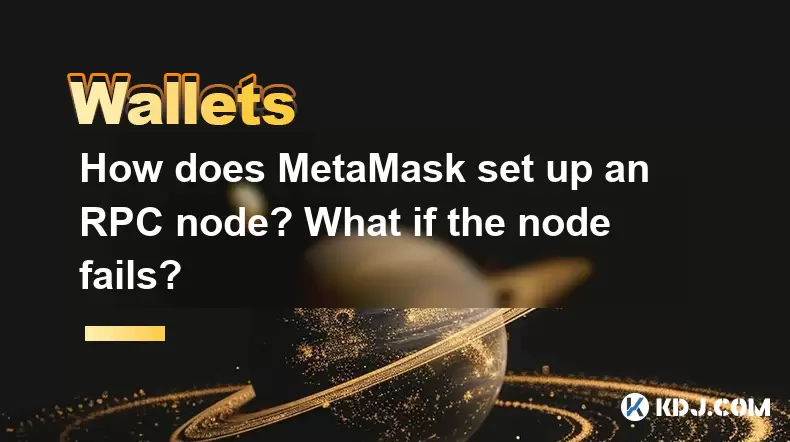
Introduction to MetaMask and RPC Nodes
MetaMask is a popular cryptocurrency wallet that allows users to interact with the Ethereum blockchain and other Ethereum-compatible networks. An important aspect of using MetaMask effectively is understanding how to set up and manage Remote Procedure Call (RPC) nodes. These nodes are crucial for connecting your wallet to the blockchain network, enabling you to send transactions and interact with decentralized applications (dApps). In this article, we will explore how to set up an RPC node with MetaMask and what to do if the node fails.
Understanding RPC Nodes
An RPC node is essentially a server that runs Ethereum software, allowing you to interact with the blockchain. It processes requests and returns responses, enabling your MetaMask wallet to perform operations such as sending transactions, querying account balances, and interacting with smart contracts. By setting up an RPC node, you can customize your connection to the Ethereum network, potentially improving performance and reliability.
Setting Up an RPC Node with MetaMask
To set up an RPC node with MetaMask, follow these steps:
- Open MetaMask: Launch the MetaMask extension or mobile app and ensure you are logged into your account.
- Access Network Settings: Click on the network dropdown menu at the top of the MetaMask interface and select "Custom RPC".
- Configure the Node: In the "New Network" window, you will need to enter the following details:
- Network Name: Give your custom network a name for easy identification.
- New RPC URL: This is the URL of the RPC node you want to use. You can either set up your own node or use a third-party service.
- Chain ID: Enter the chain ID of the network you are connecting to.
- Currency Symbol: Specify the symbol for the native cryptocurrency of the network.
- Block Explorer URL: Optionally, enter the URL of a block explorer for the network, which can be useful for transaction tracking.
- Save the Configuration: After entering all the required information, click "Save" to add the custom RPC node to your MetaMask settings.
Choosing the Right RPC Node
When selecting an RPC node, consider the following factors:
- Reliability: Choose a node that has a high uptime and is less likely to fail.
- Speed: Faster nodes can improve your overall experience, especially when interacting with dApps.
- Security: Ensure the node is operated by a trusted provider to minimize the risk of data breaches or malicious activities.
- Cost: Some nodes may require payment for usage, so consider your budget when making a selection.
What to Do If the RPC Node Fails
If your RPC node fails, you may experience issues such as transactions not being processed or dApps not loading properly. Here are steps to troubleshoot and resolve the issue:
- Check Node Status: First, verify if the node is down by checking the provider's status page or using a tool like Etherscan to see if the node is responding.
- Switch to Another Node: If the node is indeed down, switch to a different RPC node in your MetaMask settings. Follow the same steps as when setting up a new node, but choose a different RPC URL.
- Restart MetaMask: Sometimes, simply restarting the MetaMask application can resolve connectivity issues.
- Clear Cache: Clearing the cache in your browser or mobile device can help resolve issues related to outdated or corrupted data.
- Contact Support: If the problem persists, reach out to the support team of the RPC node provider or seek help from the MetaMask community forums.
Managing Multiple RPC Nodes
To enhance reliability and performance, you can set up multiple RPC nodes in MetaMask. Here's how to manage them:
- Add Multiple Nodes: Follow the steps outlined earlier to add multiple custom RPC nodes to your MetaMask settings.
- Prioritize Nodes: MetaMask allows you to prioritize nodes by their order in the network list. The node at the top of the list will be the primary node used for transactions and dApp interactions.
- Switching Nodes: You can easily switch between nodes by selecting a different network from the dropdown menu in MetaMask. This can be useful if one node is experiencing issues.
Ensuring Node Security
Security is paramount when dealing with RPC nodes, as they handle sensitive data and transactions. Here are some tips to ensure the security of your nodes:
- Use Trusted Providers: Only use RPC nodes from reputable and trusted providers to minimize the risk of data breaches.
- Enable HTTPS: Ensure that the RPC URL uses HTTPS to encrypt data transmitted between your wallet and the node.
- Monitor Node Activity: Regularly check the activity of your nodes to detect any unusual behavior that could indicate a security issue.
- Update Software: Keep your MetaMask and node software up to date to benefit from the latest security patches and improvements.
Frequently Asked Questions
Q: Can I use a public RPC node with MetaMask?
A: Yes, you can use public RPC nodes with MetaMask. Many providers offer free public nodes that you can use by entering their RPC URL in the MetaMask settings. However, be aware that public nodes may have limitations on usage and may be less reliable than private nodes.
Q: How do I know if my RPC node is performing well?
A: You can monitor the performance of your RPC node by checking its response time and uptime. Tools like Etherscan or Infura provide status pages and performance metrics for their nodes. Additionally, you can use MetaMask's built-in network status indicator to see if the node is responding properly.
Q: Can I set up my own RPC node for MetaMask?
A: Yes, you can set up your own RPC node for MetaMask. This involves running Ethereum software on a server, which can be more complex and resource-intensive than using a third-party node. However, it gives you full control over the node's performance and security.
Q: What should I do if my transactions are stuck due to a failed RPC node?
A: If your transactions are stuck due to a failed RPC node, switch to a different node in your MetaMask settings. If the transaction still does not process, you may need to resubmit it using the new node. Be cautious, as resubmitting a transaction can result in duplicate transactions if the original one eventually processes.
Disclaimer:info@kdj.com
The information provided is not trading advice. kdj.com does not assume any responsibility for any investments made based on the information provided in this article. Cryptocurrencies are highly volatile and it is highly recommended that you invest with caution after thorough research!
If you believe that the content used on this website infringes your copyright, please contact us immediately (info@kdj.com) and we will delete it promptly.
- Cryptos in July 2025: Massive Gains or Just Hype?
- 2025-07-05 20:30:13
- Pepe's EVM Layer 2 Meme Coin Mania: What's the Hype?
- 2025-07-05 20:50:12
- Shiba Inu, Dogecoin, and the Crypto Skyrocket: What's Making These Memes Soar?
- 2025-07-05 21:10:12
- Tokenized Stocks: Robinhood, Gemini, and the NYSE Threat
- 2025-07-05 21:10:12
- Altcoin Adventures: Navigating the Pepe Fork Frenzy and Solana's Summer Swings
- 2025-07-05 21:15:12
- Hong Kong's Tokenised Bond Leap: Zero Stamp Duty Sparks Web3 Ambitions
- 2025-07-05 20:30:13
Related knowledge
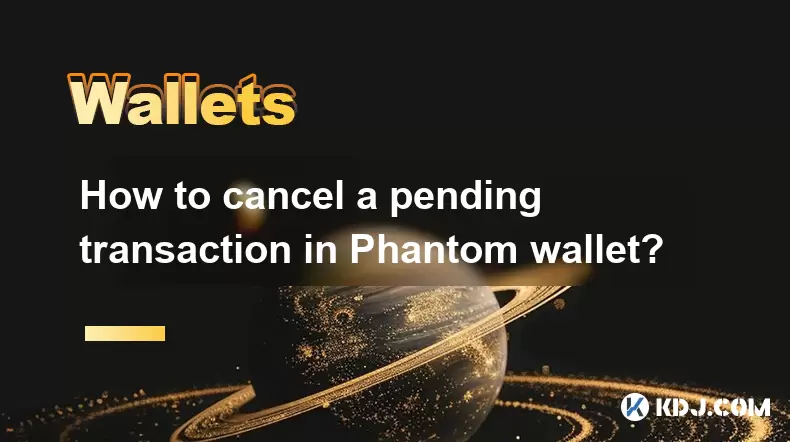
How to cancel a pending transaction in Phantom wallet?
Jul 03,2025 at 07:21pm
Understanding Pending Transactions in Phantom WalletA pending transaction in the Phantom wallet occurs when a user initiates a transfer or interaction with the Solana blockchain, but it hasn't yet been confirmed by the network. This can happen due to various reasons such as low transaction fees, network congestion, or incorrect gas settings. It's import...
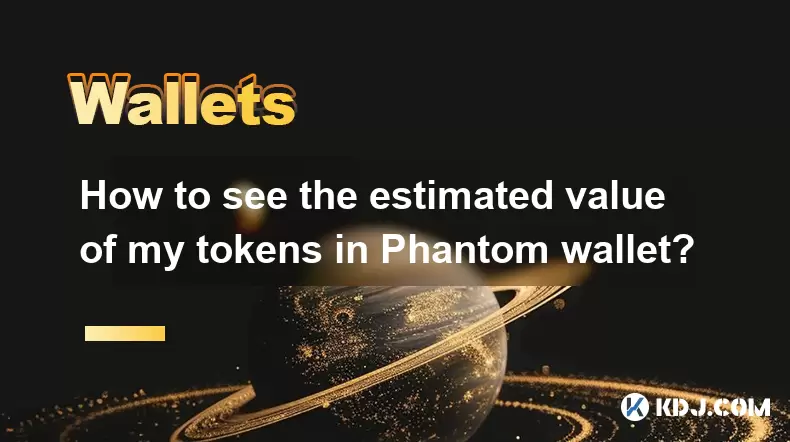
How to see the estimated value of my tokens in Phantom wallet?
Jul 04,2025 at 12:21am
What is Phantom Wallet?Phantom wallet is one of the most popular cryptocurrency wallets designed for the Solana blockchain. It allows users to store, send, receive, and manage various tokens built on Solana, including SPL tokens and NFTs. The wallet offers a user-friendly interface, making it accessible for both beginners and advanced users in the crypt...
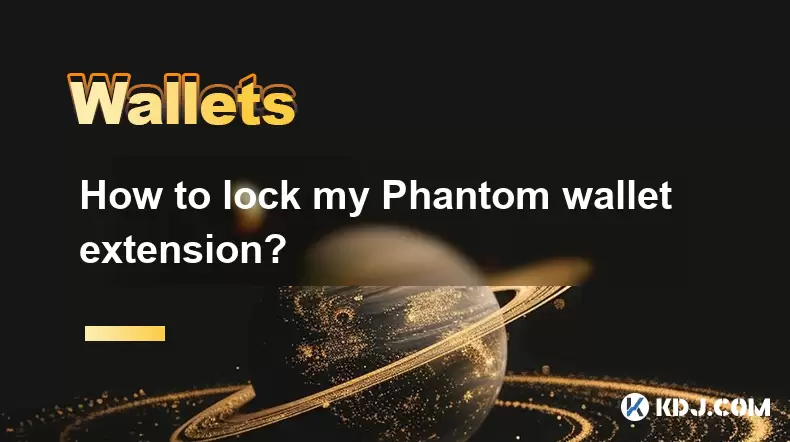
How to lock my Phantom wallet extension?
Jul 03,2025 at 11:14am
What Is the Phantom Wallet and Why Lock It?The Phantom wallet is a popular non-custodial cryptocurrency wallet designed for interacting with the Solana blockchain. Supporting both browser extensions and mobile apps, Phantom allows users to store, send, receive, and stake SOL tokens, as well as interact with decentralized applications (dApps). Securing y...

Does Phantom wallet offer two-factor authentication (2FA)?
Jul 03,2025 at 09:00am
Understanding Phantom Wallet and Its Security FeaturesPhantom wallet is a widely used non-custodial cryptocurrency wallet that supports the Solana blockchain. It allows users to store, send, receive, and interact with decentralized applications (dApps) seamlessly. As security is a top priority for any crypto wallet user, security features like two-facto...
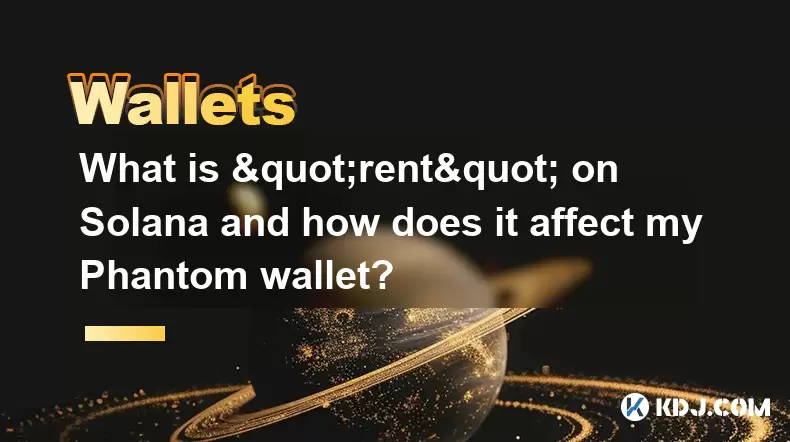
What is "rent" on Solana and how does it affect my Phantom wallet?
Jul 02,2025 at 08:35pm
Understanding 'Rent' on SolanaIn the context of Solana, the term 'rent' refers to a storage fee that users pay for maintaining data on the blockchain. Unlike Ethereum, where storage costs are paid once via gas fees during contract deployment, Solana implements a recurring cost model to ensure efficient usage of network resources. This means that any acc...
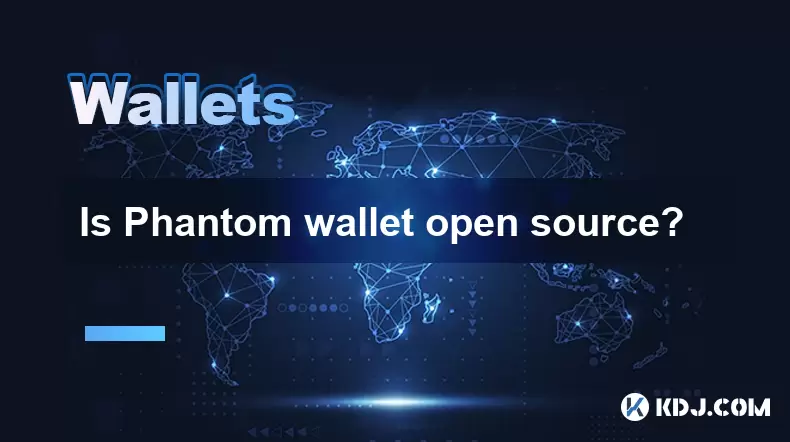
Is Phantom wallet open source?
Jul 03,2025 at 12:29am
What is Phantom Wallet?Phantom wallet is a non-custodial cryptocurrency wallet primarily designed for the Solana blockchain. It allows users to store, send, receive, and interact with decentralized applications (dApps) on the Solana network. The wallet is available as a browser extension and mobile application, offering a seamless experience for both be...

How to cancel a pending transaction in Phantom wallet?
Jul 03,2025 at 07:21pm
Understanding Pending Transactions in Phantom WalletA pending transaction in the Phantom wallet occurs when a user initiates a transfer or interaction with the Solana blockchain, but it hasn't yet been confirmed by the network. This can happen due to various reasons such as low transaction fees, network congestion, or incorrect gas settings. It's import...

How to see the estimated value of my tokens in Phantom wallet?
Jul 04,2025 at 12:21am
What is Phantom Wallet?Phantom wallet is one of the most popular cryptocurrency wallets designed for the Solana blockchain. It allows users to store, send, receive, and manage various tokens built on Solana, including SPL tokens and NFTs. The wallet offers a user-friendly interface, making it accessible for both beginners and advanced users in the crypt...

How to lock my Phantom wallet extension?
Jul 03,2025 at 11:14am
What Is the Phantom Wallet and Why Lock It?The Phantom wallet is a popular non-custodial cryptocurrency wallet designed for interacting with the Solana blockchain. Supporting both browser extensions and mobile apps, Phantom allows users to store, send, receive, and stake SOL tokens, as well as interact with decentralized applications (dApps). Securing y...

Does Phantom wallet offer two-factor authentication (2FA)?
Jul 03,2025 at 09:00am
Understanding Phantom Wallet and Its Security FeaturesPhantom wallet is a widely used non-custodial cryptocurrency wallet that supports the Solana blockchain. It allows users to store, send, receive, and interact with decentralized applications (dApps) seamlessly. As security is a top priority for any crypto wallet user, security features like two-facto...

What is "rent" on Solana and how does it affect my Phantom wallet?
Jul 02,2025 at 08:35pm
Understanding 'Rent' on SolanaIn the context of Solana, the term 'rent' refers to a storage fee that users pay for maintaining data on the blockchain. Unlike Ethereum, where storage costs are paid once via gas fees during contract deployment, Solana implements a recurring cost model to ensure efficient usage of network resources. This means that any acc...

Is Phantom wallet open source?
Jul 03,2025 at 12:29am
What is Phantom Wallet?Phantom wallet is a non-custodial cryptocurrency wallet primarily designed for the Solana blockchain. It allows users to store, send, receive, and interact with decentralized applications (dApps) on the Solana network. The wallet is available as a browser extension and mobile application, offering a seamless experience for both be...
See all articles

























































































